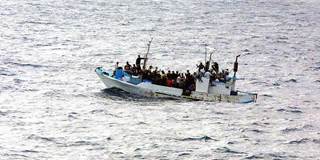The European refugee crisis marks the first time that the EU has been tasked with accommodating so many people from outside the continent, and it is unlikely to be the last. Unless policymakers incorporate a long-term vision into their approach to migration, similar emergencies will become increasingly frequent.
NEW YORK – The roughly 750,000 people who have arrived in Europe by sea in 2015 make up just a small part of the 60 million people displaced by war or persecution – the largest number in recorded history. Europe has experienced a mass influx of migrants before; some 700,000 refugees entered the European Union following the 1993 the breakup of Yugoslavia. But this marks the first time in history that the EU has been tasked with accommodating so many people from outside the continent, including new arrivals from Libya, Syria, Iraq, and Afghanistan.
Moreover, the non-European refugees who landed on European shores this year are unlikely to be the last. But the EU’s response to mass migration makes it less likely that the refugee crisis will be resolved in a sustainable way. Unless European leaders incorporate a long-term vision into their approach to migration, the probability of emergencies similar to this year’s refugee crisis will continue to rise. And that approach needs to acknowledge how domestic European policies contribute to the movement of people from the developing world.
The EU’s current myopic, reactive response to mass migration is driven by a zero-sum view of the economy that ignores the far-reaching effects of domestic policy. In its design and implementation, it is focused almost exclusively on immediate measures and short-term outcomes. The possibility of future impact is largely discounted.

NEW YORK – The roughly 750,000 people who have arrived in Europe by sea in 2015 make up just a small part of the 60 million people displaced by war or persecution – the largest number in recorded history. Europe has experienced a mass influx of migrants before; some 700,000 refugees entered the European Union following the 1993 the breakup of Yugoslavia. But this marks the first time in history that the EU has been tasked with accommodating so many people from outside the continent, including new arrivals from Libya, Syria, Iraq, and Afghanistan.
Moreover, the non-European refugees who landed on European shores this year are unlikely to be the last. But the EU’s response to mass migration makes it less likely that the refugee crisis will be resolved in a sustainable way. Unless European leaders incorporate a long-term vision into their approach to migration, the probability of emergencies similar to this year’s refugee crisis will continue to rise. And that approach needs to acknowledge how domestic European policies contribute to the movement of people from the developing world.
The EU’s current myopic, reactive response to mass migration is driven by a zero-sum view of the economy that ignores the far-reaching effects of domestic policy. In its design and implementation, it is focused almost exclusively on immediate measures and short-term outcomes. The possibility of future impact is largely discounted.